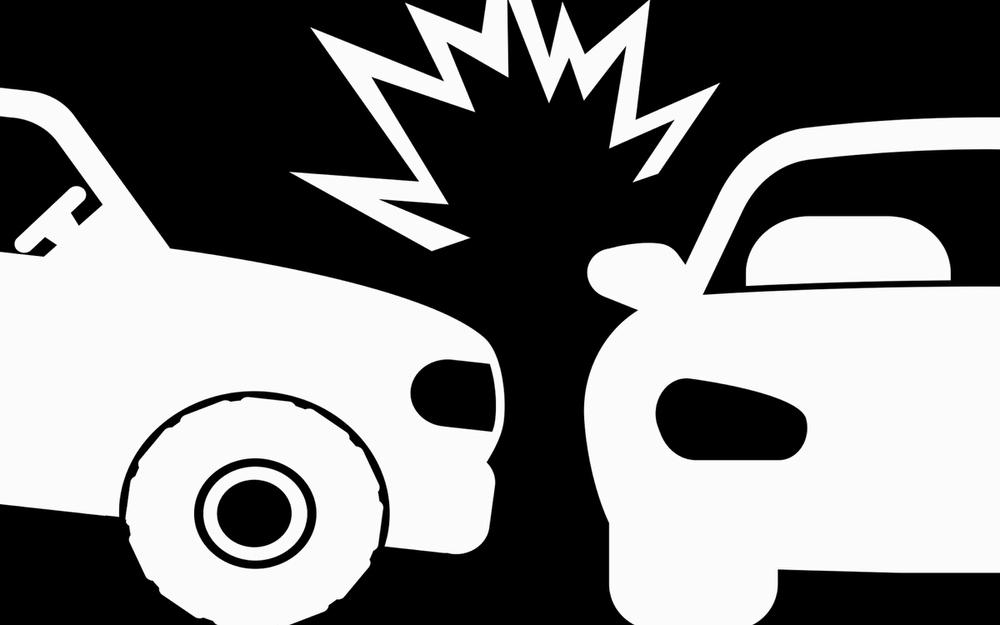Driving is simultaneously mundane and dangerous. Its sheer repetitiveness— the countless commutes, the endless stoplights—makes us feel invincible inside our cars. So we speed a little, or a lot. And generally, nothing happens. Except when it does.
“Nevada is about to experience its worst year in a decade of fatalities on [our] roadways,” says Andrew Bennett, public information officer for Nevada’s Office of Traffic Safety.
The top causes of fatal crashes in Nevada are impairment and speeding. And in the wake of the pandemic shutdown, Nevadans have been doing a lot of both. In 2020, 314 people died on the state’s roadways, according to ZeroFatalitiesNV.com. Already in 2021, 329 have perished.
Tragically, more will surely die before the year is out. And yet, most assume it won’t happen to them.
“Most people feel that it will not affect them—that they can speed, that they cannot wear seat belts, that they can have a couple of drinks and not feel intoxicated,” says Dr. Deborah Kuhls, a trauma and critical care surgeon at UMC and professor of surgery at UNLV’s Medical School. “They don’t actually think that they will be injured or killed or that anyone else will be.”
Earlier this month, those lurking dangers became very apparent, when 23-year-old Las Vegan Tina Tintor and her Golden Retriever were killed in a fiery car crash. Tintor was violently rear-ended on Rainbow Boulevard by former Las Vegas Raiders player Henry Ruggs III, who was both drunk and driving 156 mph, according to police.
“When someone notable is involved, the conversation becomes more prevalent,” Bennett says. “But the fact is, we’ve had nine fatalities just in the last four days statewide, and [only] one of them got the coverage.”
Traffic fatalities might seem like “the cost of doing business” in a car-centric state. But what if they weren’t necessary? That’s the concept behind the Zero Fatalities program led by the Nevada Departments of Public Safety & Transportation. The program’s goal: to have nobody die from crashes in Nevada by 2050.
Pandemic speeds
You might assume the roads were safer when last year’s COVID-19 lockdowns kept most folks at home. Instead, Bennett says, the opposite happened, because some drivers turned those empty roads into raceways. And, he says, bad habits linger.
“We saw almost an immediate increase in fatalities that were speed-related,” Bennett says, “which was honestly shocking to us. When fewer people were on the roads, we were expecting fewer fatalities.”
In 2020, 4,415 Nevadans were cited for driving in excess of 100 mph, nearly 900 more than in 2019. Bennett says he expects that number to increase again in 2021.
Normally, he says, speed is a factor in about 30% of fatal crashes. Today, it’s almost 50%.
Tourism’s role
Believe it or not, Bennett says, Las Vegas isn’t any worse for intoxicated driving than other places. “We have the same DUI problem per population that Topeka, Kansas, does,” he says. “It’s not specifically a Vegas thing.”
What is fairly unique to Las Vegas, however, is the Valley’s luxury-exotic car rental industry. About 8% of fatalities in Southern Nevada involve a luxury rented vehicle, Bennett says.
In June, an intoxicated tourist in a rented Lamborghini going 141 mph on West Russell Road struck—and instantly killed—a local man on a moped.
“Just today, Boulder City Police Department pulled someone over going 150 mph in a rented Lamborghini,” Bennett says. “That’s honestly unacceptable.”
Nevada’s Office of Traffic Safety has been working with Clark County to develop new life-saving policies. Possible safety enhancements include interlock devices to prevent impaired driving; speed monitoring devices or governors; and dash cameras.
“We’ve had great conversations with the industry and will continue to move forward,” Bennett says. “We just want people to have a great time and do it safely, to make sure that they can get home at the end of the day.”
Simple math
“It doesn’t take a rocket scientist to understand that the faster you go in a vehicle, the more likely that car’s gonna kill somebody,” says Keely Brooks, an avid cyclist and board member for the Southern Nevada Bicycle Coalition.
Brooks is working to promote her organization’s new education campaign, “Let’s Get There Together,” which “asks stakeholders to be invested in one another arriving safely at their respective destinations and achieving zero fatalities,” according to a press release.
Brooks’ message to Nevada drivers: “Don’t kill me, please.”
The violence of a crash depends on physics. “It’s simple math, and it’s deadly,” Bennett says. Newton’s Second Law of Motion holds that mass times acceleration equals force. Multiply the weight of the vehicle(s) times the speed(s) to determine the violence of a collision.
Bennett helps students visualize that math with this hypothetical situation: A 100-pound human going 100 mph would have to bench press 10,000 pounds in order to “hold themselves in” the vehicle, if they weren’t wearing a seatbelt.
Faster speeds make crashes worse. “If one happens to hit a pedestrian at [40-45 mph] versus say 20 miles an hour, we know from our research that that pedestrian is five times more likely to go to an ICU when they’re admitted to the hospital than if they were going slower,” Kuhls says.
Speed is just one factor involved in collisions, but it’s also the most significant, Bennett explains. “Someone can be impaired. … They can be distracted. … They can not have their seatbelt on,” he says. “But at the end of the day, speed determines how violent and deadly these crashes are—speed and speed alone.”
Solutions
Southern Nevada’s long, smooth roadways with wide lanes unintentionally help promote speeding. The general expert consensus is that lanes should be narrowed, with traffic-calming measures in place, so vehicles must slow down.
“We can do a better job of engineering our roadways,” Bennett says. “The roadway should not allow you to go that fast. You should not have the ability to go 156 miles an hour in a residential area.”
Some people will choose to speed, however, no matter the danger they pose to themselves and others. Reducing speeding will require a multi-pronged approach: education, enforcement and engineering changes to roads and cars.
But above all else, Erin Breen, coordinator for UNLV’s Traffic Safety Coalition, reminds us, “Speeding is a choice.”
Click HERE to subscribe for free to the Weekly Fix, the digital edition of Las Vegas Weekly! Stay up to date with the latest on Las Vegas concerts, shows, restaurants, bars and more, sent directly to your inbox!



